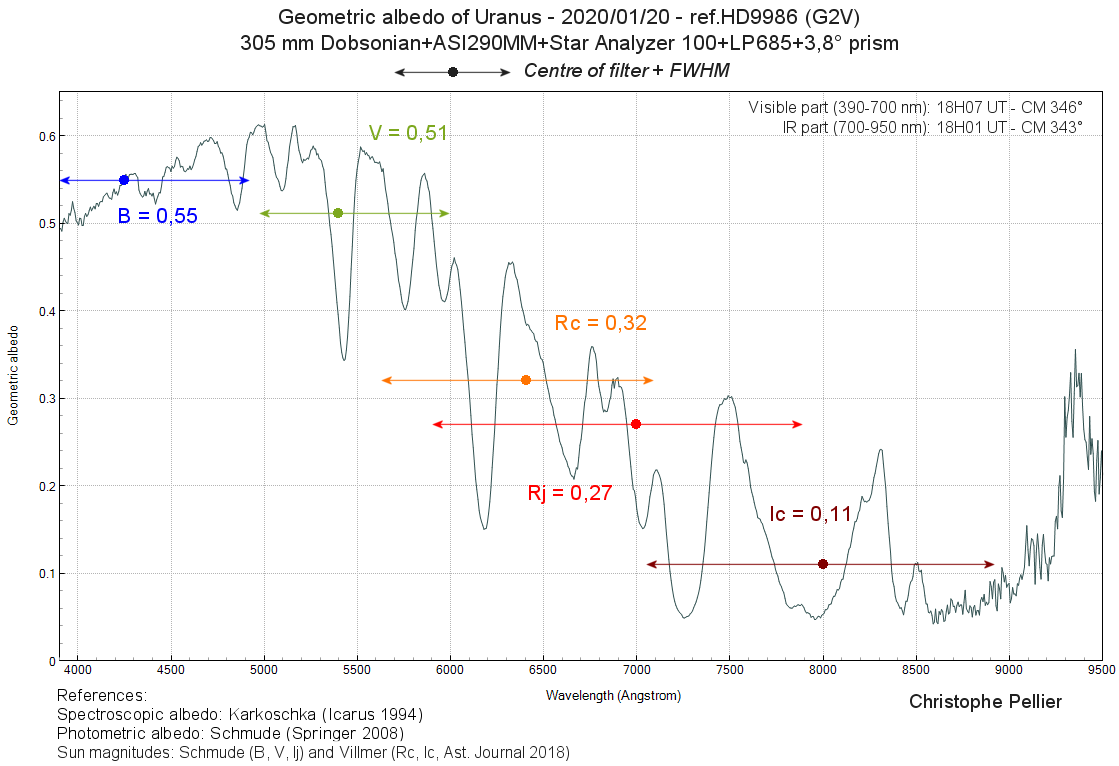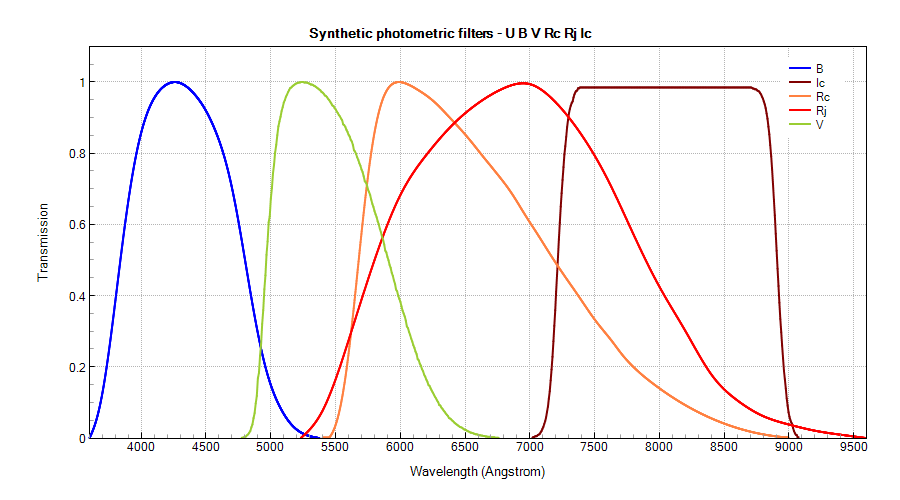| Uranus spectroscopy and photometry 2020/01/20 by Christophe.P |
Here is my last observations of Uranus for the last season, well passed the opposition. I have recently investigated more in depth the origin of the catalogue magnitudes I'm using to perform photometry with the Star Analyzer. My instrumentation forces me to use the brighter stars in the sky most of the time, and it turns out that most of the available R and I magnitudes only rarely correspond to the Bessel Rc and Ic bands. The references in SIMBAD from Ducati (2002) have been calculated through the Johnson Rj and Ij bands, resulting in brighter magnitudes for stars later than Vega (especially for G, K, M). After a few research here is the situation, when native Rc and Ic magnitudes are not available (almost always): 1) The Ic magnitudes are calculated through the Hipparcos V-I color index. It has been explicitly tied to ground-based Ic photometry. 2) The Rc magnitudes are transformed from Rj and V through an intrapolation formulae provided by Taylor in 1978 (various equations of transformation exist between the systems but this one looks as the best) 3) I can on the other hand provide native Rj magnitudes, something that might be interesting to link to "older" photo-electric photometry (through SSP3 for example). Got also an Ij synthetic filter but its passband is integrating too much noise in the red end of the spectra. Attached is also a graph showing the filters curves. Recent experiences on variable stars this winter (Betelgeuse and Zeta Gemini) are showing that my method looks to have became reliable for all bands, so I'm getting more confident with that!


ALPO-Japan Latest
Uranus Section